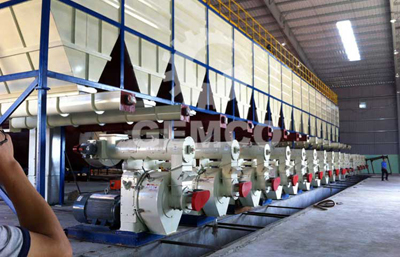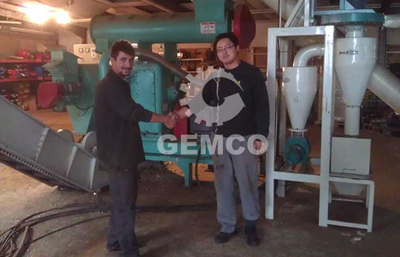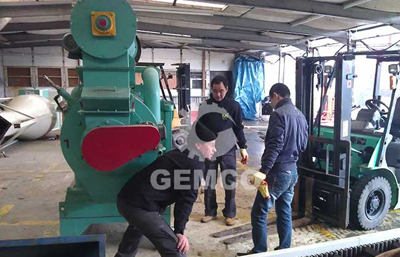Are wood pellets renewable and environmentally friendly?
Biomass pellet fuels are made of agriculture and forestry waste such as sawdust, branches, crop straws. By a series of process including chipping, crushing, drying, pelletizing, cooling and packing, the bulky biomass materials are made into pellet fuels. The biomass pellet fuel has 10 times the energy density of the unprocessed material.
Biomass pellet fuel are widely applied in industrial boiler, power plant, heating stove, and cooking range. They have high energy density, easy to store and transportation. Pellet fuels are easier to burn than coals, the combustion performance is good, and the thermal efficiency is high. Since the 1930s, many developed countries such as America, Japan, and many Europe countries have invested a lot for the development and application of biomass pellet fuels.

Although biomass pellets have such advantages and become an ideal substitute for traditional fossil fuels, many people worry about its environmental effect. In this blog, we’ll prove the wood pellets are renewable, carbon neutral and environmental friendly.
Wood pellets are carbon neutral
Wood pellets are made of biomass materials, and biomass materials come from various plants on the earth. These plants absorb CO2 from the atmosphere by Photosynthesis, and deposit them in the forms of celluloses and lignin. If not utilized by people, these carbon will go back to the atmosphere by microbial decay, forest fire or other energy consumption. When they are made into wood pellets, they burn and emit the CO2 that they absorbed during growth. In this regard, biomass pellet fuel has zero carbon emission.
Strictly speaking, although the raw material for wood pellets are carbon neutral, they consume certain quantity of energy during manufacturing and transportation. In this sense, wood pellets are regarded as low-carbon fuel. In fact, not any commercial fuels are absolutely carbon neutral.

CO2 emission of wood pellets and other fuels
Biomass pellets are renewable energy
Biomass energy comes from solar energy. By photosynthesis of the plants, the solar energy are deposited in the biomass in the form of chemical energy. Meanwhile, the utilization of biomass energy won’t generate excess CO2, so it keeps carbon balance in the atmosphere.
As long as there is sunshine, the plants photosynthesis will never stop, and biomass energy will never run out. Every year, the biomass generated by photosynthesis is up to 173 billion ton, which contains 10-20 times the annual global energy consumption, but only 3% of them are utilized.
Biomass energy includes all energies coming from plants and animals except fossil fuel, such as wood materials, forestry waste, agriculture waste, aquatic plant, oil plant, animal waste and urban organic waste. It can be transformed into solid, liquid and gas fuel.
Like wind power and solar power, biomass energy is renewable and will be never used up. Besides, it is the only renewable carbon source in the world.

Compositions of biomass pellet fuel
Biomass pellets are composed of combustible basis, inorganic substance, moisture and ash content. It contains carbon, hydrogen, oxygen and minute quantity of nitrogen, chlorine and sulphur.
- Carbon: around 40-45%. The fixed carbon content is far lower, so wood pellets are easier to burn.
- Hydrogen: around 8-10%. The violates content in 75%. The carbon and hydrogen in biomass pellets combine into low molecular hydrocarbon. Under high temperature, they break down and precipitate violate matter.
- Sulphur: less than 0.02%. You don't need to install a FGD (Flue Gas Desulfurization) device. It is good for the environment and save your cost.
- Nitrogen: less than 0.15%. The NOx emission meet the national standard.
- Ash content: around 1%-2%. It depends on what raw materials the wood pellets are made of.
- Moisture content: less than 10%
- Chlorine: less than 0.02%.

Compositions of A1 class wood pellets defined by ENplus
Biomass pellet fuel emission
The diameter of biomass pellets are 6mm or 8mm, and the length is between 3.15-40mm. Their density is 1.1-1.3t/m3, and the calorific value is 4400±100Kcal/Kg. The heat value of 1 ton of biomass pellet fuel equals 0.6t standard coal or 0.41t diesel or fuel oil.
According to the research on the biomass pellet boilers, during biomass pellet combustion, the SO2 emission is lower than 33.6mg/m3, the smoke dust is less than 64mg/m3, and the NOx is little. The air pollutant emission is far lower than the national standard.
The ash residues after pellet fuel combustion are mainly composed of minerals and carbons. They only account for 0.4-7% of the pellet weight. They can be used as potash fertilizer on farms or gardens.
Compared with coal, wood pellets contains more volatiles, so they are easier to burn, and the burning speed is 11% higher than coal. The combustion rate is high. In specialized pellet stove, the combustion efficiency is over 85%. The heat loss is nearly zero, while the heat loss of coal is 7-15%. Besides, the ash, sulphur and nitrogen content is lower than coal. According to the quality inspection organization, the SO2 emission of coal is 20.5 times that of pellet fuel.
We receive enquiries in English, Español (Spanish), Русский язык (Russian), Français (French) and العربية (Arabic). Our professional team will reply to you within one business day. Please feel free to contact us!




